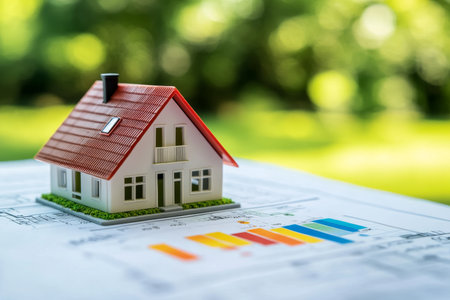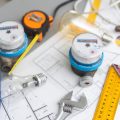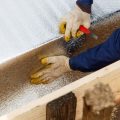Understanding the Heritage Context
Victorian and Edwardian homes occupy a unique place in the UK property landscape, celebrated for their timeless charm, ornate features, and robust construction. Built between the mid-19th and early 20th centuries, these properties are often prized not only for their historical significance but also for their contribution to the country’s architectural identity. When considering green retrofits—such as installing energy-efficient heating systems or improving insulation—it is crucial to recognise that these homes were constructed long before modern sustainability standards existed.
The heritage value of Victorian and Edwardian homes lies in their distinctive design elements: high ceilings, sash windows, decorative brickwork, original fireplaces, and intricate cornicing. These features contribute significantly to the character and market value of such properties. However, this uniqueness also brings specific challenges when upgrading to greener technologies. Any intervention must carefully balance improved energy performance with the preservation of period details—a requirement often enforced by local planning authorities, especially if the property is listed or within a conservation area.
Key Characteristics of Victorian and Edwardian Homes
| Feature | Victorian Era (1837-1901) | Edwardian Era (1901-1910) |
|---|---|---|
| Common Materials | Brick, timber, slate | Red brick, pebble dash, wood panelling |
| Window Style | Sash windows with narrow glazing bars | Larger sash or casement windows |
| Ceiling Height | Tall (often over 3m) | Slightly lower than Victorian but still generous |
| Ornamental Details | Cornices, ceiling roses, mouldings | Simpler cornicing, wider hallways |
Preservation vs. Modernisation: The Delicate Balance
Navigating a retrofit means understanding both the legal constraints of heritage protection and the practicalities of integrating new heating systems without compromising historic integrity. Homeowners face the dual challenge of enhancing comfort and sustainability while retaining original features that define their property’s character. As demand grows for greener living in the UK—and as regulations tighten around energy efficiency—the conversation about sustainable retrofitting in period homes has never been more pertinent.
2. Green Heating Options for Period Homes
When considering a retrofit of Victorian or Edwardian properties, selecting the right green heating system is crucial to both sustainability and preserving architectural heritage. Older British homes often face unique challenges—solid brick walls, high ceilings, and original sash windows—which require careful adaptation. Below, we explore three of the most promising eco-friendly heating solutions suitable for period homes, outlining their benefits and key considerations.
Air Source Heat Pumps (ASHPs)
Air source heat pumps are increasingly popular across the UK for retrofitting older buildings. They extract heat from outside air—even in cold weather—and use it to warm your home through radiators or underfloor heating. Modern ASHP systems are designed to be compatible with traditional interiors and can be installed with minimal disruption if planned correctly. However, improving insulation and upgrading radiators may be necessary to maximise efficiency in draughty Victorian or Edwardian settings.
Ground Source Heat Pumps (GSHPs)
Ground source heat pumps harness stable underground temperatures by circulating a refrigerant through buried pipes. While installation involves more groundwork—potentially challenging in urban areas or small gardens—their long-term efficiency is unmatched, particularly for larger period properties with ample outdoor space. GSHPs provide consistent heat output and can significantly reduce energy bills over time.
Solar Integration
Solar technology offers another layer of sustainability for period homes. Solar photovoltaic (PV) panels generate electricity, while solar thermal panels heat water directly. Integrating solar solutions with heat pumps can further reduce reliance on grid power. For listed buildings or those in conservation areas, discreet panel placement is essential—roof mounts on rear elevations or garden-based arrays often provide viable alternatives without compromising historical aesthetics.
Comparison of Green Heating Solutions for Period Properties
| Heating Solution | Main Benefits | Common Challenges | Best Suited For |
|---|---|---|---|
| Air Source Heat Pump | Lower carbon emissions, suitable for most properties, relatively easy installation | May require radiator upgrades, less efficient in poorly insulated homes | Semi-detached/terraced homes with moderate insulation upgrades |
| Ground Source Heat Pump | High efficiency, low running costs, long lifespan | Requires garden space, higher upfront costs, disruptive installation process | Larger detached homes with sufficient land |
| Solar Panels (PV/Thermal) | Reduces electricity bills, complements other green systems, low maintenance | Aesthetic concerns in heritage zones, variable generation depending on sunlight | Properties with unobstructed roof space or gardens; conservation-sensitive adaptations possible |
Navigating Planning Restrictions and Heritage Considerations
Council regulations often govern external changes to period properties. Early engagement with local planning authorities and heritage bodies can streamline approvals for green heating retrofits. Opting for reversible installations and preserving original features help balance modern sustainability goals with the enduring charm of Victorian and Edwardian architecture.
![]()
3. Navigating Planning Permission and Listed Building Consent
When retrofitting a Victorian or Edwardian home with green heating solutions, navigating the maze of planning permission and listed building consent is a critical step. Many period homes across the UK are either located within conservation areas or have listed status, meaning that homeowners must pay close attention to regulatory frameworks before any major work can commence. Here’s what you need to consider:
Key Regulatory Considerations
| Regulatory Factor | Description | Who to Consult |
|---|---|---|
| Planning Permission | Required for substantial alterations that affect the external appearance or structure of your property. | Local Council Planning Department |
| Listed Building Consent | Mandatory if your home is Grade I, II*, or II listed, covering both internal and external changes. | Local Conservation Officer, Historic England (for higher-grade listings) |
| Building Regulations Approval | Ensures installations meet safety, insulation, and energy efficiency standards. | Building Control Officer |
| Conservation Area Consent | Applies if your property lies within a designated conservation area; restrictions may extend to windows, doors, and even colour schemes. | Local Authority Conservation Team |
The Consultation Process
Early engagement with your local council’s planning department and conservation officers can streamline your retrofit journey. It’s essential to prepare detailed plans that clearly show how your proposed heating upgrades—such as heat pumps or underfloor heating—will minimise impact on the historic fabric of the building. Councils often encourage pre-application discussions to highlight potential concerns and suggest sympathetic solutions. This collaborative approach not only smooths the approval process but also demonstrates your commitment to preserving heritage while embracing sustainability.
Top Tips for a Smooth Approval Process
- Document Everything: Keep thorough records of all correspondence, surveys, and plans submitted.
- Work with Specialists: Engage architects and installers experienced in heritage retrofits for best results.
- Be Transparent: Clearly explain how green heating measures will benefit both the environment and the building’s longevity.
- Aim for Reversibility: Where possible, propose solutions that can be reversed without permanent alteration to historic features.
Navigating these permissions might seem daunting at first glance, but with careful planning, specialist advice, and open dialogue with local authorities, it is possible to upgrade your period home with modern green heating while maintaining its architectural character and value.
4. Addressing Common Retrofit Challenges
Retrofitting Victorian or Edwardian homes with green heating solutions is a promising way to cut energy costs and futureproof your property, but these period buildings present unique hurdles. Understanding and overcoming these obstacles is key to a successful retrofit that balances sustainability with heritage character.
Physical and Logistical Hurdles
Older British homes were not designed with modern insulation or heating systems in mind. The most frequent challenges encountered during retrofits include:
| Challenge | Description | Typical Solutions |
|---|---|---|
| Insulation Limitations | Solid brick or stone walls common in Victorian/Edwardian houses make internal or external wall insulation complex and sometimes costly. | Use breathable internal insulation materials; prioritise loft and underfloor insulation where possible. |
| Ventilation | Improved airtightness can trap moisture, risking damp or mould – a particular issue in older properties lacking cavity walls. | Install mechanical ventilation with heat recovery (MVHR); ensure adequate trickle vents and window upgrades. |
| Space for Plant | Green heating systems like heat pumps or biomass boilers often require dedicated plant rooms or outdoor space – a premium in urban terraces. | Opt for compact air source heat pumps; consider creative use of outhouses, cellars, or garden space. |
| Upgrades to Existing Pipework | Old pipework may not be compatible with low-temperature systems or could be corroded after decades of service. | Replace or upgrade with modern insulated pipes; increase radiator sizes to suit lower flow temperatures of renewable systems. |
Heritage Considerations vs. Modern Comforts
A key concern is maintaining the original character of your home while integrating contemporary eco-friendly technologies. Listed building consent may be needed for external changes, so always consult your local authority and engage experienced retrofit professionals familiar with British heritage guidelines.
The Importance of a Whole-House Approach
Tackling these challenges piecemeal can undermine efficiency gains. A holistic approach—starting with an in-depth home assessment—helps prioritise measures, manage disruption, and optimise return on investment over time. This strategic mindset is crucial for homeowners who want both long-term savings and lasting property value in the UK’s evolving housing market.
5. Cost, Incentives, and Return on Investment
Retrofitting a Victorian or Edwardian home with green heating solutions is an investment that requires careful financial assessment. The initial outlay for technologies such as air source heat pumps, ground source heat pumps, or high-efficiency boilers can be significant, particularly when factoring in the unique challenges posed by period properties. However, with rising energy prices and growing environmental awareness across the UK, homeowners are increasingly considering the long-term savings and value uplift these improvements bring.
Assessing Upfront Costs
The cost of retrofitting depends on the size and condition of your property, as well as the complexity of installation due to architectural features typical of Victorian and Edwardian homes (e.g., solid walls, sash windows). Here is a comparative overview:
| Heating Solution | Estimated Installation Cost (£) | Typical Annual Savings (£) |
|---|---|---|
| Air Source Heat Pump | £7,000 – £14,000 | £400 – £600 |
| Ground Source Heat Pump | £15,000 – £25,000 | £500 – £700 |
| High-Efficiency Gas Boiler | £2,000 – £4,000 | £100 – £300 |
Navigating Government Grants and Schemes
The UK government recognises the barriers many homeowners face when upgrading heritage properties and has launched several financial incentives to support green retrofits:
- Boiler Upgrade Scheme (BUS): Offers grants up to £7,500 for installing heat pumps in England and Wales.
- ECO4 Scheme: Targets low-income households for energy efficiency improvements.
- Green Homes Grant (historical reference): While now closed, similar regional initiatives may emerge; always check local council offerings.
Calculating Return on Investment (ROI)
The potential payback period for a green retrofit depends on current energy usage, fuel type replaced, and available incentives. For many Victorian or Edwardian homes currently reliant on gas or oil heating, switching to a heat pump—especially when combined with insulation upgrades—can result in substantial savings over 10–15 years. Additionally, improving EPC ratings not only reduces bills but can also boost property value—a key consideration in the UK’s competitive housing market.
Ultimately, while upfront costs can be daunting, leveraging government support and focusing on long-term gains makes green retrofitting a financially prudent choice for owners of historic British homes.
6. Choosing the Right Installer and Ensuring Quality Workmanship
Retrofitting a Victorian or Edwardian home with green heating technology is a substantial investment, both financially and in terms of your propertys historic value. Selecting an installer with the right credentials and experience in heritage buildings is crucial to achieving high-quality results that respect your homes character while meeting modern sustainability goals. Here are several key considerations for homeowners in the UK:
Key Criteria for Selecting a Reputable Installer
| Criteria | Why It Matters |
|---|---|
| Heritage Experience | Installers who have worked on listed or period properties understand the structural sensitivities and aesthetic requirements unique to Victorian and Edwardian homes. |
| Certifications | Look for accreditation such as TrustMark, Gas Safe Register (for boilers), or MCS (for heat pumps), which signal adherence to UK standards. |
| References & Case Studies | A reputable contractor should provide evidence of previous successful retrofits, ideally with before-and-after photos and client testimonials. |
Ensuring Compliance with Building Regulations
The UK’s Building Regulations set out mandatory standards for energy efficiency, safety, and conservation of fuel and power in homes. Ensure your chosen installer is familiar with Part L (Conservation of Fuel and Power) and can liaise with local building control officers if needed, especially for listed buildings where consent may be required. Don’t hesitate to request written confirmation that all works will meet or exceed these statutory requirements.
Quality Standards Checklist
- Ask for a detailed project plan outlining the scope, timeline, and materials.
- Check that insulation, ventilation, and heating solutions are tailored to solid wall constructions typical of Victorian/Edwardian homes.
- Ensure warranties cover both workmanship and equipment performance.
Final Tips for Homeowners
- Obtain at least three itemised quotes to compare costs transparently.
- Confirm insurance coverage for accidental damage during retrofitting works.
- Insist on a post-completion inspection to verify quality and compliance.
Selecting the right professional not only safeguards your investment but also preserves the integrity of your period property for future generations while supporting the UKs net zero ambitions.
7. Living with Green Upgrades: The Impact on Home Comfort and Value
Retrofitting your Victorian or Edwardian home with sustainable heating solutions is not just an eco-conscious decision—it’s a strategic investment in both comfort and future value. Let’s explore how these upgrades influence daily living, enhance energy efficiency ratings, and impact the property market for period homes in the UK.
Enhanced Home Comfort
Modern green heating systems such as air source heat pumps or underfloor heating offer a more consistent and controllable warmth compared to traditional open fires or ageing boilers. Improved insulation, often installed alongside these systems, also reduces draughts and cold spots that are common in older properties. Residents can expect quieter operations and better indoor air quality, thanks to sealed systems that minimise dust circulation.
Energy Efficiency Ratings: From G to A?
One of the most tangible benefits of retrofitting is the uplift in your Energy Performance Certificate (EPC) rating—a crucial factor in today’s housing market. Below is a typical progression:
| Original EPC Rating | After Insulation Only | With Full Green Heating Retrofit |
|---|---|---|
| G/F (Very Poor) | E/D (Moderate) | C/B (Good-Excellent) |
An improved EPC not only means lower running costs but also widens your pool of potential buyers, especially as lenders and renters increasingly demand higher-rated homes.
The Investment Case: Resale Value Uplift
Retrofitting for sustainability is becoming a key driver of capital appreciation in period homes. Buyers are now factoring future energy costs and environmental compliance into their purchasing decisions. As government regulations tighten around energy efficiency, heritage properties with upgraded systems will command a premium. According to recent estate agent surveys, green-retrofitted period homes can achieve a 5-12% higher resale value compared to non-upgraded counterparts.
Marketability Comparison
| Feature | Unimproved Period Home | Green-Retrofitted Period Home |
|---|---|---|
| EPC Rating | F/G | C/B/A |
| Running Costs | High | Low-Medium |
| Buyer Demand | Niche/Lower | Mainstream/Higher |
The Future Outlook
The UK government’s push towards net zero carbon emissions by 2050 will continue to put pressure on homeowners to upgrade legacy heating systems. Early adopters of green retrofits stand to benefit not just from reduced energy bills and improved living standards but also from enhanced long-term asset value as market preferences evolve. In summary, embracing sustainable upgrades in your Victorian or Edwardian home is no longer a mere lifestyle choice; it is an essential strategy for future-proofing your investment.


